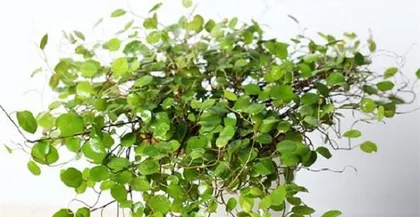Spider plant is a common indoor foliage plant, loved by many people. However, many people are unsure whether spider plants prefer sun or shade. This article will introduce the growth habits and care tips for spider plants, in order to better care for these beautiful plants.

I. Origin and Basic Characteristics of Spider Plant
Spider plant is native to tropical regions of Africa and belongs to the succulent family. Its main stem is slender, and the leaves are often linear or ribbon-like. The flowers of the spider plant are usually white or light yellow, with a fresh and elegant fragrance. In addition to purifying the air, the spider plant can also add a touch of natural beauty to the indoors.
II. Growing Environment for Spider Plant
The growing environment requirements for spider plants are relatively relaxed. Its characteristics of being shade-tolerant, cold-tolerant, preferring moisture but not excessive water allow it to adapt to different growing conditions. However, it still has certain growth requirements. The ideal growing environment for a spider plant is a bright location, but it cannot tolerate direct sunlight.

III. Shade-Loving Characteristics of Spider Plant
Spider plants can adapt to a certain amount of light, but if they are in a well-lit environment, their leaves are prone to fading and curling. Spider plants are shade-loving plants and should not be placed in direct sunlight, as this can easily cause sunburn to the plant.
IV. Temperature Requirements for Spider Plant
Spider plants are not cold-hardy. The most suitable temperature range is 20°C to 30°C. In summer, the temperature should not exceed 32°C, and in winter, it should not be lower than 10°C. If the ambient temperature is too low or too high, it will lead to slow growth, yellowing, or withering of the leaves.
V. Watering Amount and Method for Spider Plant
Spider plants have a high demand for water, but they should not be overwatered. It is best to use the saucer watering method: pour water into the saucer and let the plant absorb it on its own. During high summer temperatures, the frequency of watering can be increased appropriately, but waterlogging should be avoided.

VI. Fertilization for Spider Plant
Spider plants grow relatively slowly and generally do not require excessive fertilizer. Usually, applying liquid fertilizer once a month can promote the growth of the spider plant.
VII. Pruning and Propagation of Spider Plant
Spider plants generally do not require much pruning. If the leaves are too long or too dense, they can be trimmed appropriately. The main propagation methods for spider plants are cuttings and division. For cuttings, new tender shoots can be inserted into moist sand or soil and transplanted after they have rooted. For division, the plant can be taken out of the pot, divided into two or three parts, and then replanted.
VIII. Common Problems and Solutions for Spider Plant
If the spider plant's leaves turn yellow, dry out, or curl, it may be due to overwatering or underwatering. Yellowing leaves can also be a sign of nutrient deficiency, in which case appropriate fertilization is needed. If the spider plant is not growing well, it could also be due to a poor growing environment, which needs to be adjusted to promote growth.
IX. Uses and Ornamental Value of Spider Plant
Spider plants not only have the effect of purifying the air but also possess unique beauty. Placing a pot of spider plant indoors can not only improve the air quality of the entire room but also add a fresh and natural aesthetic.
X. The Relationship Between Spider Plant and Feng Shui
It is said that in Feng Shui, the spider plant has the meaning of "attracting wealth and treasure." Because the leaves of the spider plant are shaped like coins, and it can absorb negative energy around it, it is considered a plant that can bring good luck.
XI. Combining Spider Plant with Other Plants
The leaves of the spider plant grow vertically downward, making it very suitable for pairing with taller plants. For example, pairing it with plants like Dracaena or cacti can create a strong visual contrast.
XII. How to Choose a Healthy Spider Plant
When choosing a spider plant, pay attention to whether the leaves are healthy in color and if there are any signs of pests or diseases. Also, check if the roots are healthy, with no signs of drying out or rot. It is best to choose a spider plant with a neat shape and full leaves.
XIII. How to Care for Spider Plant
To take good care of a spider plant, pay attention to the humidity of the indoor environment, control the amount of watering appropriately, and avoid direct sunlight. At the same time, pay attention to regular fertilization and timely pest and disease control.
XIV. Beauty Tips for Spider Plant
To make the spider plant more beautiful, you can use some care techniques. For example, appropriate pruning, adjusting the growing environment, and choosing the right fertilizer.
XV. Conclusion
The spider plant is a unique and beautiful plant, but its growth requirements are quite demanding and require our careful attention. Only by understanding the growth habits and care techniques of the spider plant can we allow it to grow healthily and vigorously, bringing us more beauty.